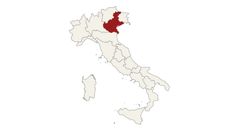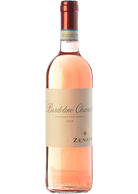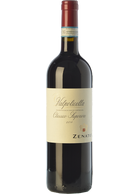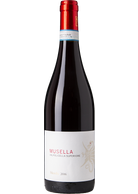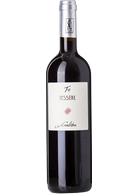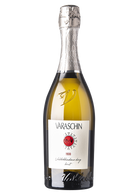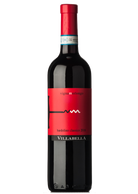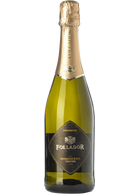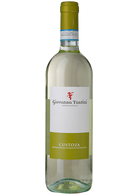Wine from Veneto
Veneto, for quality and quantity, is one of the great regions for Italian wine. At the foot of the Rhaetian Alps, among the Garda moraines and towards Valpolicella, wines were already famous in ancient times, so much so that San Zeno, bishop and symbol of Verona in the 3rd century, already supported the importance of the wine sector in this area. Valued also by the Most Serene Republic of Venice, Veneto wine was able to be reborn even after phylloxera, with the planting of many new international vines and the recovery of the most important native vines. In the Treviso area, in the land of Prosecco, the Scuola Enologica di Conegliano, one of the world's centres of excellence in the sector, is still active today.

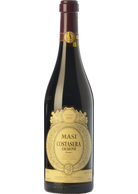


Bisol Valdobbiadene Superiore di Cartizze 2022

Bortolomiol Valdobbiadene Extradry Bandarossa 2023
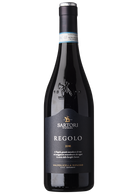
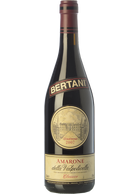


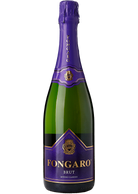
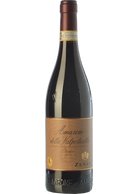
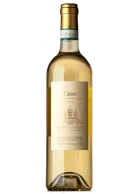

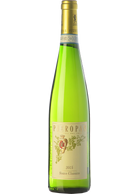

Bortolomiol Valdobbiadene Brut Prior 2023

Bortolomiol Valdobbiadene Extradry Senior 2023

Veneto
Veneto, for quality and quantity, is one of the great regions for Italian wine. At the foot of the Rhaetian Alps, among the Garda moraines and towards Valpolicella, wines were already famous in ancient times, so much so that San Zeno, bishop and symbol of Verona in the 3rd century, already supported the importance of the wine sector in this area. Valued also by the Most Serene Republic of Venice, Veneto wine was able to be reborn even after phylloxera, with the planting of many new international vines and the recovery of the most important native vines. In the Treviso area, in the land of Prosecco, the Scuola Enologica di Conegliano, one of the world's centres of excellence in the sector, is still active today.
A vast region and therefore very diversified in terms of climate and soil, Veneto produces wine from the lake, mountains, hills and plains. With bottled wine that wanders at around ten million hectolitres per year, it is the region that tows, in terms of quantity, the entire national sector, so much so that about 20% of Italian quality wines are produced in Veneto.
The west of Veneto is the part of the region that has best preserved its prefillosseric features. The heart of the Verona area is represented by Valpolicella and the Soave area, a little further east. In Valpolicella, an arch north of Verona, on hilly marly-clayey soils with calcareous inserts, red grapes dominate, with the great corvina, which produces warm, soft, complex and long-lived wines, rondinella, molinara, corvinone and many others. In Valpolicella production is traditionally in blends and so are produced, usually with a prevalence of corvina, the wines of the territory: the young and crunchy Valpolicella, the splendid Amarone - from the same grapes dried in drying rooms and then vinified dry - and Ripasso, which is Valpolicella "refed" in maceration on the spent Amarone skins. The quintessence of Amarone, especially in the classic DOCG area, towards Negrar, a soft and velvety red wine traditionally semi-dried, however, lies in Recioto della Valpolicella, that is, the sweet red wine made from the same grapes which are dried.
In the eastern part of the Verona area, in a fully volcanic area, the Garganega dominates. This grape, characterised by acidity and structure, gives some of the finest, most complex, mineral and long-lived white wines in Italy. As a single variety, or with Trebbiano, we have the Soave, and, from the same grapes which are dried, the Recioto di Soave. Leaving behind us the magical Castello Scaligero di Soave and the magnificent crus of this DOC (Monte Foscarino, Calvarino, Froscà...), and crossing the Alpone torrent, you enter the Vicenza area but remain in the same volcanic wine-growing and wine-producing area marked by the garganega. This is the district of Gambellara, Recioto di Gambellara and a rare and splendid Vin Santo made from garganega grapes. Soave and Gambellara are appreciated young, in steel alone, for the verticality of the vine, but also aged, perhaps in wood, to enjoy the complexity and longevity of this white.
Returning to the Verona area, the other significant names are those of Garda. The lake, which also has a climatic influence on Valpolicella, has a stronger, Mediterranean influence near the shores. Here are produced, in addition to a small piece of Lugana, otherwise Lombard, Bardolino, a light red with the same Valpolicella grapes, excellently vinified in "chiaretto", i.e. rosé, and Custoza, a white garganega and trebbiano. Tense and savoury wines that best interpret the mineral soil of the lower Garda area. Further north, the Valdadige Terradeiforti DOC, bordering with Trentino, protects an autochthonous lambrusco vinified still: enantio.
In the Vicenza area there are three important denominations in addition to Gambellara. The Lessini DOC, just north of Soave, is the terroir of the autochthonous durella, a particularly acidic and mineral white grape, and produces excellent sparkling wines using the classic method, even from long periods on the lees. The DOC of the Berici Hills, in the south of the province, gives excellent international reds - with very interesting results from the Carmenere - and stands out for the autochthonous red tai, a grenache to be drunk generally young to appreciate the fruit and the gentle structure. Further north, on the slopes of the Asiago plateau, the Breganze DOC especially enhances the white vespaiola grapes, sapid and spicy, and the fantastic passito that it produces by hanging and knotting the bunches in the cellar attics: the Torcolato.
The great wines of the province of Padua are concentrated in the Euganean Hills area, halfway between volcanic and calcareous. An area that gives some of the greatest Bordeaux cuts in Italy, perhaps even superior to many Tuscans. Between the Gemola and the Venda, cabernet sauvignon, cabernet franc and merlot stand out, which, given their great mineral content, do not disdain long ageing in barrels. As for the whites, there is the serprino, the local prosecco, the white manzoni and a particular yellow Muscat that gives distinctly citrus notes: the orange blossom Muscat, which today is recognised as an independent DOCG for the passito and aromatic sweet sparkling wine versions. In the lowlands of Padua we find the Bagnoli DOC, dominated by both red and white international grapes, with the exception of the native Friularo, an extremely late and structured clone of Piave raboso, which is harvested at the first frost in November and gives the rare Bagnoli Friularo DOCG.
The province of Treviso is, without doubt, the home of the greatest prosecco. Prosecco, a sparkling wine made from glera grapes, delicately aromatic, re-fermented using the charmat method and known throughout the world as a symbol of Made in Italy, is produced both in the plains, with modest results, and in the hills. In the Treviso area there are two DOCG of the best prosecco, the hillside DOCG of the heroic vineyards, today a UNESCO World Heritage Site: Asolo, richer and more structured, and Conegliano-Valdobbiadene, finer and more elegant. In both cases, with the exception of experimental ancestral lee fermentation or classic method, it is produced in charmat with extra dry doses, more classic and soft, and brut, more austere and modern. Valdobbiadene DOCG also officially boasts numerous "grand crus", here called "rive", and an area of choice, the small hill of Cartizze, from which comes a particularly structured and opulent prosecco which is traditionally dosed in the dry version.
In Asolo and Conegliano, however, it’s not only prosecco which is made. In fact, the Colli di Conegliano DOCG protects the great white wine of the area, the manzoni bianco, from the name of the great oenology professor who created this vine by crossing riesling and pinot bianco. A mineral and taut white, but also structured. The same DOCG also enhances a particular version of prosecco passito, the Torchiato di Fregona, and a delicate and elegant red passito made from marzemino grapes: the Refrontolo. The Colli Asolani are instead a land of opulent and structured international reds. The Montello area, now DOCG, stands out, where on particularly suitable soils matures, especially in the Venegazzù area, a great red from cabernet sauvignon, merlot and cabernet franc.
In the lower Treviso area, along the Piave river, there are some of the best Italian reds from the plains. The prince grape, here, is the raboso, particularly late and resistant to humidity, which gives rustic but full-bodied, ripe and well-rounded reds, even if nervous and acidic, scratchy, when young. This is the Piave DOC. Also worthy of note, as a cru from the same area, is the Malanotte DOCG: a softer red, obtained by mixing dry vinified raboso with a proportion of raboso produced from dried grapes.
The Far East of Veneto, coinciding with the area that looks towards the Tagliamento and therefore Friuli, is a predominantly flat and alluvial area that represents the hinterland of the Venetian lagoon. It is the area of the Lison-Pramaggiore DOC and the Lison DOCG: land of international red and white grapes, and above all of tai, the name used in Veneto to refer to the Friulian, here characterised by a light structure and elegant minerality.
